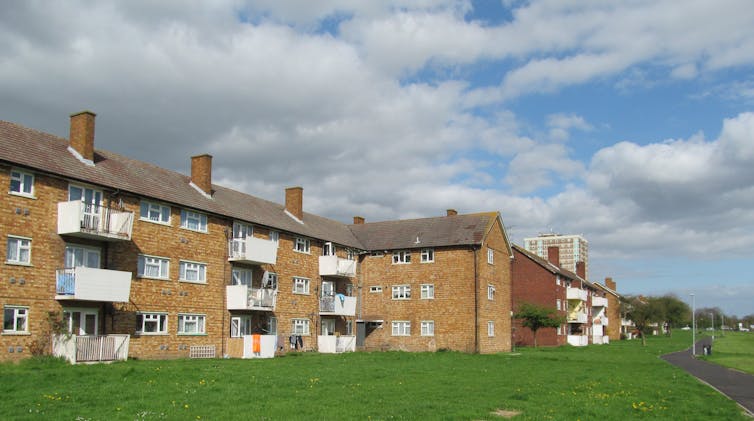Authors: Gavin Parker, Professor of Planning Studies, University of Reading & Anupam Nanda, Professor of Urban Economics & Real Estate, University of Manchester
Housing inequalities have been laid bare by COVID-19, further exposing a housing crisis in England that is already severe. Unless some genuine steps are taken, it will only get worse for millions living in inadequate housing. The numbers are staggering – more than 8 million people are living in unsuitable housing in England.
Recent government housing policy for England has backed shared ownership as one of the solutions. The idea is that people jointly own their home with a housing association. They pay a combination of rent, mortgage and service fees.
On the face of it, shared ownership seems to be a good idea. It becomes easier to get started on the property ladder. As the owner’s income rises, they should be able to increase the proportion of the property they own over time. This takes place through a process called staircasing, where further shares of equity are bought.
However, our research suggests it may not always work well in practice, either as an affordable housing option or as a route to full ownership.
Affordable housing
Successive governments have promoted shared ownership, citing its social progressiveness and capacity to promote social mobility. Local planners in England have routinely agreed to include shared ownership units in the required affordable housing element of new developments.
Earlier this year, the House of Commons put the figure for shared ownership households in England at 157,000. Shared ownership takes up an increasing proportion of the overall supply of affordable housing. It made up 34% of new affordable housing supply in 2018-19, a rise from 23% in 2015-16. The median initial equity stake purchased was £100,000 with a median initial deposit of £12,800.

While the demand for shared ownership varies, it is highest in areas where affordability is most stretched, such as London and the south-east of England.
The government has made a series of policy tweaks to bolster shared ownership. These include lowering the initial ownership stake to 10%, down from 25% of the value of the property. A “right to shared ownership” scheme, aimed at nudging housing association tenants to buy a stake in their existing homes, has been unveiled.
The minimum staircasing requirement is to be lowered to 1% of the value of the property, instead of the present 10%. This would enable residents to buy equity shares of the property more easily, rapidly and frequently.
Rising costs
Still, there are problems with shared ownership. It may not offer an affordable route to home ownership, once all the monthly costs are accounted for.
People in shared ownership pay service charges and rents that can rise typically 3% each year, as well as paying a mortgage on the part of the equity they own. This series of outgoings may leave many shared owners with little financial ability to save, let alone staircase.
Shared ownership works if staircasing is smooth. However, when the owner’s income increases slowly and house price growth has been rapid, their ability to buy slices of the equity is reduced. This is especially true for people on low incomes, whose housing dreams shared ownership is supposed to support.

If the goal is to build more housing as a means to make housing more affordable, then we should look at the not so distant past. During the 1950s and 60s, twice the number of homes were built each year as are built now, and many of them were affordable. We simply do not build enough affordable homes any more.
Increasing shared ownership will not be enough to address the colossal level of housing need. It is obvious that the pressing need is to build good quality, liveable and healthy homes. This is especially needed in a post-COVID world, where housing outcomes may be closely associated with life outcomes.












